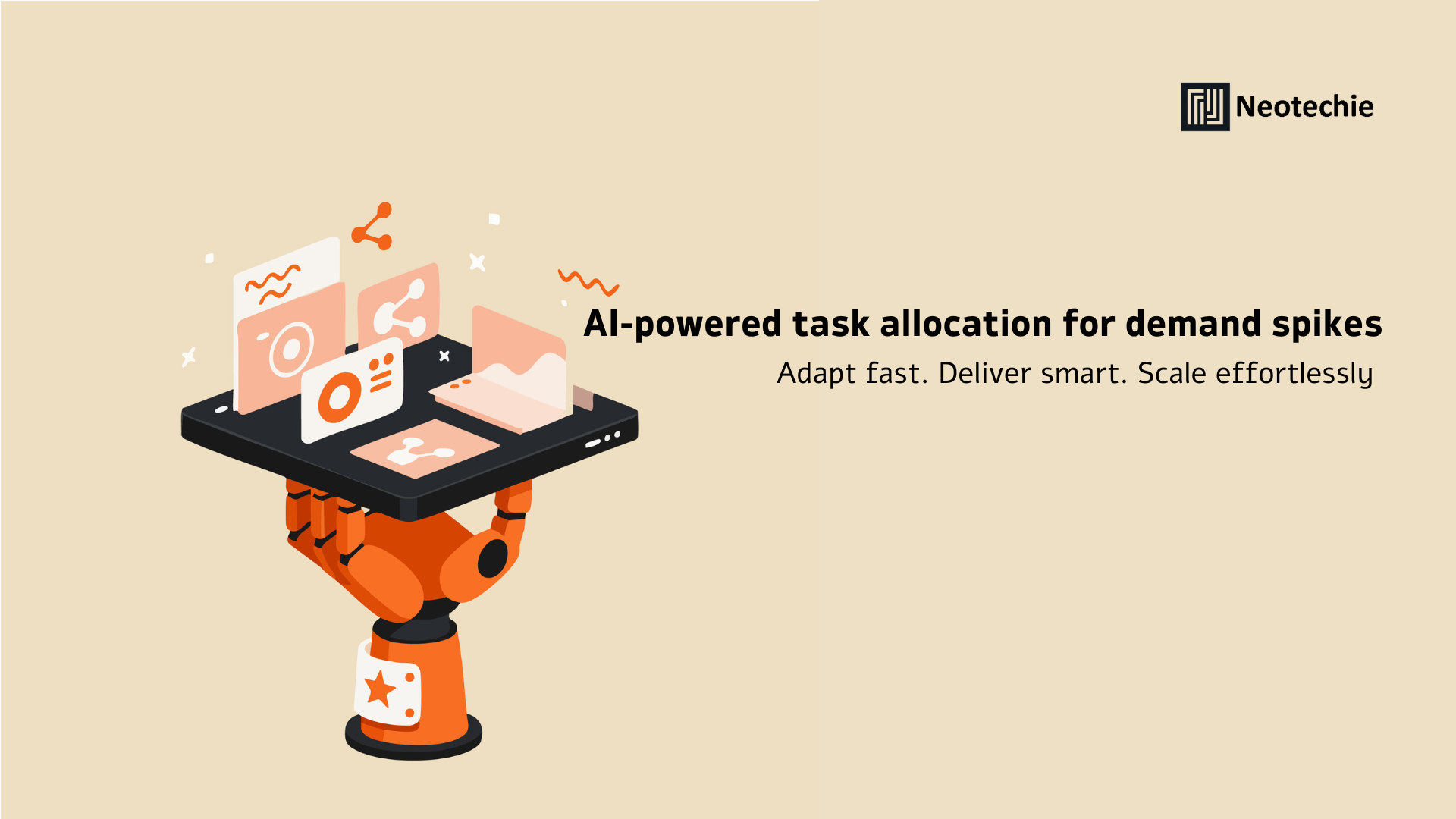Dynamic Workload Management Under Demand Spikes – AI Adaptive Task Allocation
What is Dynamic Workload Management with AI?
Dynamic workload management powered by AI refers to the real-time allocation and redistribution of tasks across teams and systems in response to changing workloads, demand spikes, or unforeseen events. Unlike traditional task assignment methods, which are static and rule-based, AI-driven systems continuously monitor operational capacity, task queues, and performance metrics to optimize task distribution. This ensures efficiency, fairness, and responsiveness, even during peak demand periods.
These systems integrate predictive analytics and machine learning to anticipate workload fluctuations, dynamically assign tasks to available resources, and adjust priorities based on business objectives, employee capacity, and operational constraints. The AI continuously learns from historical and real-time data, improving allocation accuracy and responsiveness over time.
Why AI Adaptive Task Allocation is Transformative
Implementing AI for workload management brings significant operational and strategic benefits:
- Real-Time Response to Demand Spikes:
Businesses often face sudden surges in work due to seasonal demand, product launches, or market fluctuations. AI systems detect these spikes in real-time and dynamically redistribute tasks to prevent bottlenecks, ensuring timely completion and maintaining service levels. - Optimized Resource Utilization:
By analyzing workloads, employee capacity, and skill sets, AI ensures tasks are assigned efficiently. Underutilized resources are automatically leveraged, and high-priority tasks are given appropriate attention, improving productivity and reducing burnout. - Enhanced Fairness and Employee Satisfaction:
AI-driven allocation considers workload balance, skill alignment, and availability, ensuring that no individual or team is overloaded while others remain idle. This promotes fairness, reduces stress, and enhances overall employee engagement. - Predictive Planning and Proactive Management:
Predictive analytics enables AI to forecast workload spikes based on historical trends, upcoming events, or market indicators. Organizations can proactively allocate resources, adjust schedules, and prepare contingency plans to mitigate operational disruptions. - Continuous Improvement through Feedback Loops:
AI systems monitor outcomes, task completion times, and resource performance, refining future allocation decisions. Feedback loops ensure the system evolves, becomes more accurate, and aligns better with organizational goals over time.
How Businesses Implement AI-Driven Dynamic Workload Management
- Assessment of Current Workflows:
Analyze existing task distribution patterns, performance metrics, and resource utilization to identify inefficiencies and opportunities for AI optimization. - Integration of AI Models:
Deploy predictive analytics and machine learning models that assess workload, employee availability, skill sets, and priority levels. Train these models on historical task data to improve allocation accuracy. - Real-Time Monitoring and Task Redistribution:
Implement dashboards and monitoring tools that allow AI to continuously track workload, detect spikes, and reassign tasks dynamically. This ensures operational continuity during sudden surges or unexpected staff absences. - Human Oversight and Intervention:
While AI can automate allocation, human oversight is essential for critical tasks, exception handling, and strategic decisions. Managers can review AI recommendations and approve adjustments, ensuring alignment with business objectives. - Continuous Optimization and Feedback:
Track key performance indicators such as task completion times, employee utilization, and response times. Feed this data back into AI models to refine allocation algorithms, enhance predictive accuracy, and improve operational efficiency.
How Neotechie Helps
Neotechie provides end-to-end solutions for AI-driven dynamic workload management:
- Workflow Assessment and Opportunity Identification: Evaluate current task management practices and identify areas where AI can optimize allocation and resource utilization.
- Custom AI Model Development: Deploy machine learning and predictive analytics models tailored to the organization’s data and operational needs.
- Seamless Integration with Enterprise Systems: Connect AI allocation engines with HR systems, task management platforms, and operational dashboards for real-time monitoring and execution.
- Human-in-the-Loop Oversight: Implement mechanisms for critical review, approvals, and intervention to ensure AI decisions align with business strategy and compliance.
- Continuous Monitoring and Improvement: Track performance metrics, refine models, and optimize workflows to ensure sustained efficiency, employee satisfaction, and business agility.
Driving Business Transformation with AI Adaptive Task Allocation
AI-driven dynamic workload management transforms traditional task assignment into a proactive, intelligent system. Organizations gain the ability to respond to demand spikes without compromising productivity or service quality. Employees experience fair and balanced workloads, enhancing engagement and retention. Predictive capabilities allow management to anticipate challenges and make informed decisions, reducing downtime and operational risk.
Neotechie ensures that AI-driven allocation aligns with organizational goals, optimizes human and system resources, and continuously adapts to changing operational demands. By leveraging this technology, businesses achieve scalable efficiency, improved employee satisfaction, and the agility required to thrive in fast-paced and unpredictable environments.

